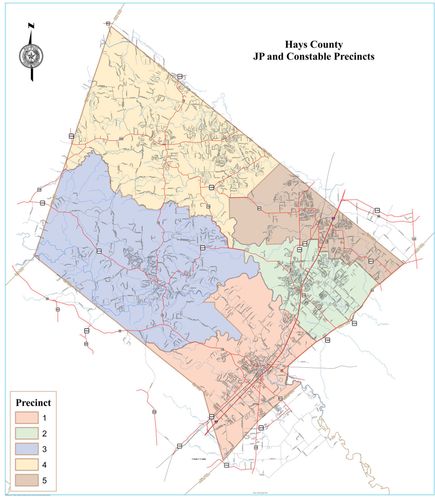Report on U.S. Autism Research Policy and its Impact on Sustainable Development Goals
Introduction: Policy Contradictions in Environmental Health Research
An analysis of recent actions by the Department of Health and Human Services (HHS), under the leadership of Secretary Robert F. Kennedy Jr., reveals a significant contradiction between stated policy goals and administrative actions concerning autism research. While the Secretary has publicly committed to identifying environmental causes of autism, his tenure has been marked by the systematic dismantling of research programs and the defunding of studies aimed at this exact purpose. These actions have profound negative implications for the achievement of several United Nations Sustainable Development Goals (SDGs), particularly those concerning public health, scientific innovation, and environmental protection.
Impact on Sustainable Development Goals
SDG 3: Good Health and Well-being
The administration’s policies directly undermine progress toward SDG 3, which aims to ensure healthy lives and promote well-being for all. Specifically, Target 3.9, which calls for a substantial reduction in illnesses from hazardous chemicals and pollution, is jeopardized by the termination of critical research.
- Funding Cuts: Over $40 million in grants from the National Institutes of Health (NIH) for dozens of autism-related research projects have been canceled. This includes studies investigating links between autism and environmental factors such as air pollution.
- Dismantling Research Infrastructure: The elimination of the division at the National Institute for Occupational Safety and Health (NIOSH) where epidemiologist Erin McCanlies worked has halted decades of research into the effects of workplace chemical exposures on neurodevelopment.
- Suppression of Key Findings: Research linking autism to specific environmental factors is being defunded and discontinued. This includes established links to:
- Air pollution and wildfire smoke
- Pesticides and plastic additives like BPA
- Industrial solvents such as trichloroethylene (TCE) and methylene chloride
- “Forever chemicals” including PFOA and PFNA
SDG 8: Decent Work and Economic Growth
The administration’s actions compromise SDG 8, particularly Target 8.8, which focuses on protecting labor rights and promoting safe and secure working environments. The dissolution of NIOSH’s Health Effects Lab, which investigated occupational hazards, represents a significant setback for worker safety.
- Research by McCanlies and her colleague Irva Hertz-Picciotto established clear links between parental occupational exposure to solvents and an increased likelihood of having a child with autism.
- Their most recent study identified associations between workplace exposure to plastics and ethylene oxide and the severity of autism symptoms in children.
- The elimination of the very division conducting this research removes a critical mechanism for identifying workplace risks and developing protective measures, directly contravening the principles of SDG 8.
SDG 9: Industry, Innovation, and Infrastructure
Progress on SDG 9, which calls for enhancing scientific research and innovation (Target 9.5), is being actively reversed. The administration’s approach has been characterized by the dismissal of established science and the disruption of the national research apparatus.
- Secretary Kennedy has publicly expressed skepticism of existing scientific expertise, stating, “We need to stop trusting the experts.”
- The closure of federal research labs and the encouragement of early retirement for veteran scientists have resulted in a significant loss of institutional knowledge and expertise.
- The new $50 million Autism Data Science Initiative has been criticized by the scientific community for a lack of transparency and a review process that deviates from traditional NIH standards, raising concerns about its scientific integrity and potential for bias.
SDG 12 & SDG 16: Responsible Consumption and Production & Strong Institutions
The administration’s environmental and institutional policies conflict with SDG 12 (Target 12.4: environmentally sound management of chemicals) and SDG 16 (Target 16.6: effective, accountable, and transparent institutions).
- The Environmental Protection Agency (EPA) is reversing bans and weakening regulations on chemicals linked to autism, including TCE and methylene chloride.
- The EPA has also dismantled parts of its Office of Research and Development and encouraged the departure of over 2,300 employees, weakening the nation’s primary institution for environmental protection.
- The lack of transparency surrounding the new HHS autism initiative undermines the principles of accountable governance central to SDG 16.
Case Study: The Termination of NIOSH Environmental Autism Research
Decades of Progress Halted
The collaborative research conducted by Erin McCanlies (NIOSH) and Irva Hertz-Picciotto (University of California, Davis) exemplifies the type of work being eliminated. Their studies provided crucial evidence linking environmental factors to autism, directly supporting the objectives of SDG 3 and SDG 8.
Key Research Findings
- 2012 Study: Established a correlation between parents of children with autism and a higher likelihood of occupational exposure to solvents like lacquer, varnish, and xylene.
- 2019 Study: Found that women exposed to solvents at work during or just before pregnancy were 1.5 times more likely to have a child with autism.
- 2023 Study: Identified 31 gene variants that, when combined with solvent exposure, significantly elevated the risk of having a child with autism.
- Forthcoming Study: Found that parental exposure to plastics was “consistently and significantly associated” with lower cognitive scores, increased aberrant behaviors, and deficits in life skills in their children with autism.
This entire line of inquiry was terminated when McCanlies’ division at NIOSH was dissolved. Her final paper, which recommended enhanced protective measures at worksites, was submitted as the federal capacity to implement such recommendations was being actively dismantled.
Analysis of Sustainable Development Goals in the Article
1. Which SDGs are addressed or connected to the issues highlighted in the article?
The article discusses issues that are directly and indirectly connected to several Sustainable Development Goals (SDGs). The primary themes of environmental health, occupational safety, scientific research, institutional integrity, and pollution control link the article’s content to the following SDGs:
- SDG 3: Good Health and Well-being: The core subject of the article is autism, a neurodevelopmental condition, and its potential links to environmental toxins and chemicals. The entire narrative revolves around ensuring healthy lives and promoting well-being by identifying and mitigating environmental health risks.
- SDG 8: Decent Work and Economic Growth: The research highlighted in the article, particularly the work of epidemiologist Erin McCanlies, focuses on occupational health. It investigates how parents’ exposure to chemicals in the workplace can affect their children’s health, which directly relates to the goal of promoting safe and secure working environments.
- SDG 11: Sustainable Cities and Communities: The article mentions the link between autism and air pollution, including diesel exhaust and wildfire smoke. These are significant environmental challenges, particularly in urban and surrounding areas, connecting the discussion to the goal of reducing the adverse environmental impact of cities.
- SDG 12: Responsible Consumption and Production: The discussion covers a wide range of industrial chemicals and pollutants, such as solvents (TCE, methylene chloride), plastics (BPA), and “forever chemicals” (PFOA, PFNA). The article’s focus on the health impacts of these substances and the rollback of regulations governing them relates to the environmentally sound management of chemicals.
- SDG 16: Peace, Justice and Strong Institutions: A major theme is the weakening of scientific and regulatory institutions. The article details the elimination of research divisions at the National Institute for Occupational Safety and Health (NIOSH), the dismantling of the EPA’s Office of Research and Development, the cancellation of research grants, and a lack of transparency in new government initiatives. This directly addresses the need for effective, accountable, and transparent institutions.
2. What specific targets under those SDGs can be identified based on the article’s content?
Based on the specific issues discussed, the following SDG targets are most relevant:
-
SDG 3: Good Health and Well-being
- Target 3.9: By 2030, substantially reduce the number of deaths and illnesses from hazardous chemicals and air, water and soil pollution and contamination.
Explanation: The article is centered on research investigating the link between autism and exposure to hazardous substances. It explicitly mentions “workplace chemicals,” “air pollution,” “pesticides,” “solvents,” “metals,” and “forever chemicals” as potential environmental factors contributing to the condition. The work of McCanlies and others is aimed at understanding these links to ultimately reduce illnesses caused by such contamination.
- Target 3.9: By 2030, substantially reduce the number of deaths and illnesses from hazardous chemicals and air, water and soil pollution and contamination.
-
SDG 8: Decent Work and Economic Growth
- Target 8.8: Protect labour rights and promote safe and secure working environments for all workers, including migrant workers, in particular women migrants, and those in precarious employment.
Explanation: The article highlights the research conducted by the National Institute for Occupational Safety and Health (NIOSH), which focuses on “how parents’ exposure to workplace chemicals affects the chance that they will have a child with autism.” It mentions that “Chemical plant workers, painters, electricians, plumbers, construction workers, cleaners and medical personnel” are among those exposed to solvents, directly connecting the issue to the safety of working environments.
- Target 8.8: Protect labour rights and promote safe and secure working environments for all workers, including migrant workers, in particular women migrants, and those in precarious employment.
-
SDG 11: Sustainable Cities and Communities
- Target 11.6: By 2030, reduce the adverse per capita environmental impact of cities, including by paying special attention to air quality and municipal and other waste management.
Explanation: The article points to studies that have linked autism to “air pollution” and “diesel exhaust.” It also describes a canceled research grant intended to “determine whether air pollution from wildfires might increase the risk of various neurological conditions,” including autism. This directly relates to the target of improving air quality to reduce adverse health impacts.
- Target 11.6: By 2030, reduce the adverse per capita environmental impact of cities, including by paying special attention to air quality and municipal and other waste management.
-
SDG 12: Responsible Consumption and Production
- Target 12.4: By 2020, achieve the environmentally sound management of chemicals and all wastes throughout their life cycle… and significantly reduce their release to air, water and soil in order to minimize their adverse impacts on human health and the environment.
Explanation: The article discusses the rollback of environmental protections and regulations on specific chemicals linked to autism, such as TCE, methylene chloride, and ethylene oxide. It states the EPA is “reversing bans on several chemicals, including TCE” and “reconsidering” restrictions on ethylene oxide, which runs counter to the goal of sound chemical management to protect human health.
- Target 12.4: By 2020, achieve the environmentally sound management of chemicals and all wastes throughout their life cycle… and significantly reduce their release to air, water and soil in order to minimize their adverse impacts on human health and the environment.
-
SDG 16: Peace, Justice and Strong Institutions
- Target 16.6: Develop effective, accountable and transparent institutions at all levels.
Explanation: The article provides multiple examples of institutional weakening. This includes Kennedy eliminating McCanlies’ “entire division” at NIOSH, the EPA “dismantling its Office of Research and Development,” and the cancellation of “more than $40 million in grants.” Furthermore, Kennedy’s new $50 million autism initiative is criticized for lacking transparency, as the NIH “has not done so” in releasing the names of reviewers or the criteria they use.
- Target 16.6: Develop effective, accountable and transparent institutions at all levels.
3. Are there any indicators mentioned or implied in the article that can be used to measure progress towards the identified targets?
The article implies several quantitative and qualitative indicators that can be used to measure progress, or lack thereof, towards the identified targets.
-
For SDG Target 3.9 (Reduce illness from pollution):
- Implied Indicator: Prevalence and incidence rates of neurodevelopmental conditions (like autism) linked to environmental exposures. The article mentions a “sevenfold increase in diagnoses in California” and numerous studies that establish correlations between autism and specific chemicals (solvents, pesticides, PFOA) and pollutants (air pollution, diesel exhaust). Tracking these correlations is a way to measure the health impact of pollution.
-
For SDG Target 8.8 (Safe working environments):
- Implied Indicator: Data on occupational exposure to hazardous substances. The research by McCanlies and Hertz-Picciotto uses “detailed information on the occupations of two large groups of parents” to compare their “chemical exposures before their children were born.” This method itself serves as an indicator for assessing risks in different professions.
-
For SDG Target 11.6 (Reduce environmental impact of cities):
- Implied Indicator: Research findings correlating air quality levels with health outcomes. The article describes a study by Rebecca Schmidt that found a “significant association between wildfire pollution exposure and autism.” Such studies provide a direct measure of the health impact of urban and regional air quality.
-
For SDG Target 12.4 (Sound management of chemicals):
- Implied Indicator: Number and status of regulations on hazardous chemicals. The article provides a clear, negative indicator by stating that the EPA is “reversing bans on several chemicals, including TCE” and reconsidering restrictions on ethylene oxide. The existence and enforcement of such regulations are direct measures of progress.
-
For SDG Target 16.6 (Effective and transparent institutions):
- Implied Indicator: Public expenditure on scientific research and development in environmental health. The article quantifies the regression on this indicator, citing “tens of millions of dollars in cuts to federal funding for research on autism” and the cancellation of “more than $40 million in grants.”
- Implied Indicator: Transparency of government processes. The article points to a lack of transparency in Kennedy’s new initiative, where the review process does “not follow the traditional NIH review process,” and information on reviewers and selection criteria has not been made public.
4. Table of SDGs, Targets, and Indicators
| SDGs | Targets | Indicators Identified in the Article |
|---|---|---|
| SDG 3: Good Health and Well-being | 3.9: Substantially reduce illnesses from hazardous chemicals and pollution. | Prevalence of autism linked to environmental factors (e.g., solvents, air pollution, pesticides, “forever chemicals”). The article cites a “sevenfold increase in diagnoses in California” as a key data point. |
| SDG 8: Decent Work and Economic Growth | 8.8: Protect labour rights and promote safe and secure working environments. | Rates of parental occupational exposure to hazardous chemicals (e.g., solvents, plastics, ethylene oxide) in specific jobs (e.g., painters, cleaners, medical personnel). |
| SDG 11: Sustainable Cities and Communities | 11.6: Reduce the adverse per capita environmental impact of cities, focusing on air quality. | Correlation between air pollution levels (from wildfires, diesel exhaust) and rates of neurological conditions like autism. |
| SDG 12: Responsible Consumption and Production | 12.4: Achieve environmentally sound management of chemicals to minimize adverse impacts on human health. | The status of government regulations and bans on hazardous chemicals linked to autism, such as TCE, methylene chloride, and ethylene oxide. The article notes the EPA is “reversing bans” and “reconsidering” restrictions. |
| SDG 16: Peace, Justice and Strong Institutions | 16.6: Develop effective, accountable and transparent institutions at all levels. | Amount of government funding for environmental health research (article cites “tens of millions of dollars in cuts” and “$40 million in grants…canceled”). Transparency of research funding processes (article notes lack of public information on reviewers and criteria for a new $50 million initiative). |
Source: thefulcrum.us







